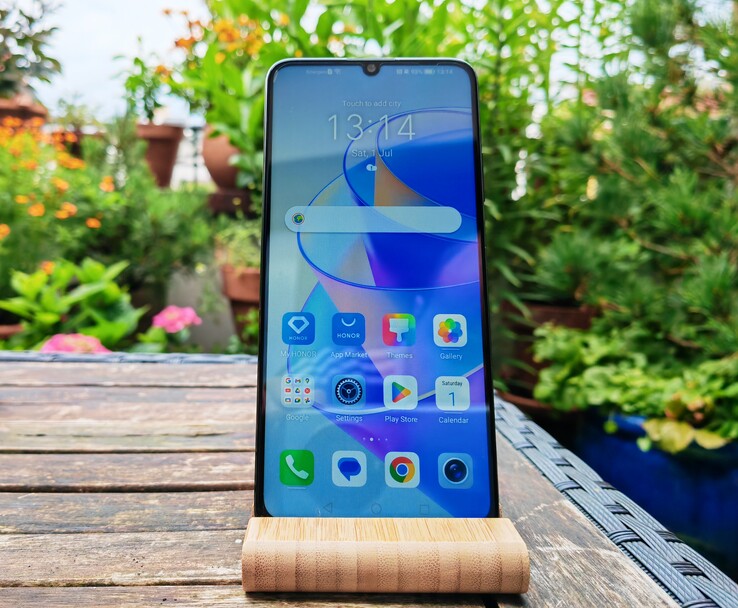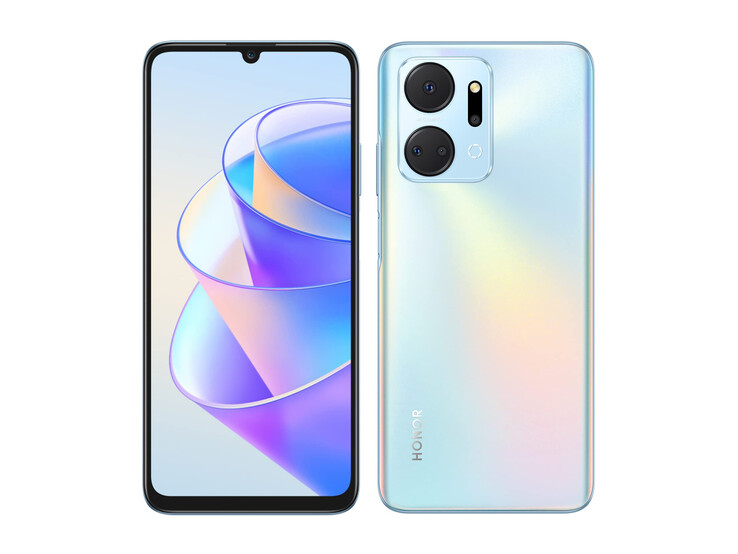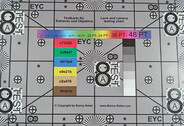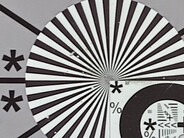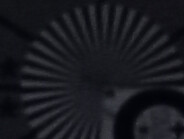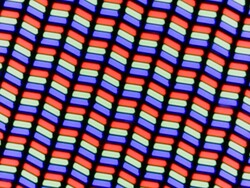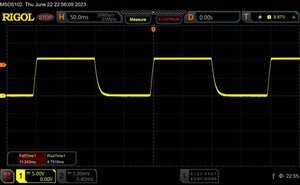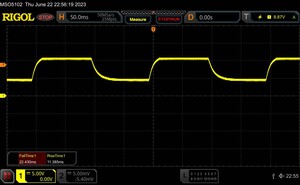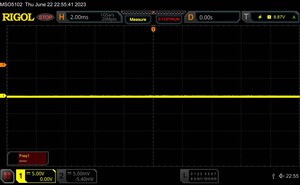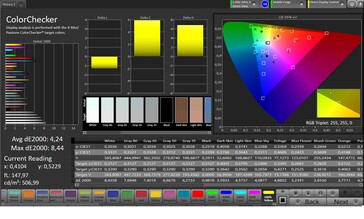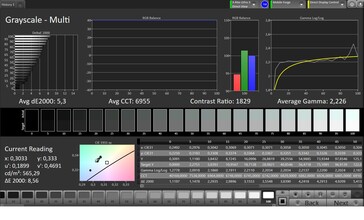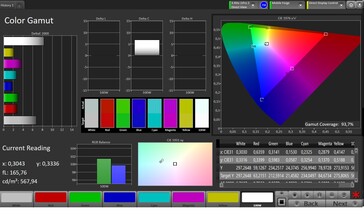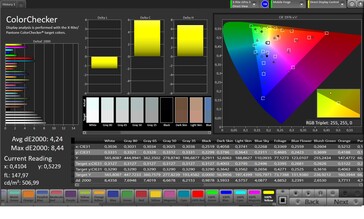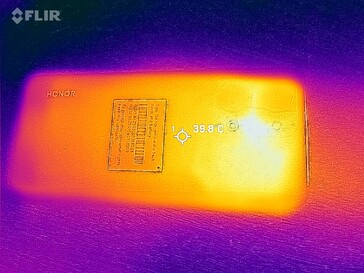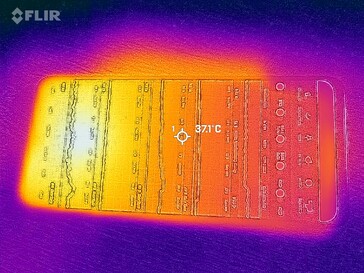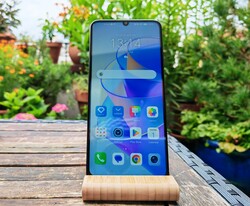Honor X7a smartphone review - Flexible cameras in a low-priced cell phone
Possible competitors in comparison
Rating | Date | Model | Weight | Drive | Size | Resolution | Price |
|---|---|---|---|---|---|---|---|
| 74.6 % v7 (old) | 07 / 2023 | Honor X7a Helio G37, PowerVR GE8320 | 196 g | 128 GB eMMC Flash | 6.74" | 1600x720 | |
| 78.5 % v7 (old) | 06 / 2023 | Honor X8a Helio G88, Mali-G52 MP2 | 179 g | 128 GB eMMC Flash | 6.70" | 2388x1080 | |
| 80.1 % v7 (old) | 05 / 2023 | Xiaomi Redmi Note 12 4G SD 685, Adreno 610 | 188 g | 128 GB UFS 2.2 Flash | 6.67" | 2400x1080 | |
| 78.7 % v7 (old) | 05 / 2023 | Nokia G22 T7200 (T606), Mali-G57 MP1 | 195 g | 64 GB UFS 2.2 Flash | 6.52" | 1600x720 | |
| 79.4 % v7 (old) | 05 / 2023 | Samsung Galaxy A14 5G Dimensity 700, Mali-G57 MP2 | 202 g | 64 GB UFS 2.2 Flash | 6.60" | 2408x1080 |
Case and features - Wrapped in plastic
The Honor X7a is made of plastic, but it still looks quite stable and pressure on the front or back hardly reaches the screen's liquid crystal. However, the phone creaks quietly when twisted. The back is available in glossy black or a matte version in Ocean Blue.
Both color variants cost from 170 Euros (~$185) on the Internet at the time of testing, for example at amazon.de. That is already a considerable discount compared to the RRP of 230 Euros (~$251). The Titanium Silver color option is almost exclusively available in Central Europe via Honor's online store.
The phone with a 6.74-inch screen offers reasonably narrow bezels, is easy to use for both left- and right-handers, and fits comfortably in the hand thanks to well-rounded edges.
128 GB of mass storage is ample for the price range, but the Xiaomi Redmi Note 12 4G offers much faster UFS flash than our test device. NFC is on board, as well as a 3.5 mm port for audio devices.
The microSD reader works on class level in the test with our reference SD card Angelbird V60 in terms of read and write speeds.
| SD Card Reader - average JPG Copy Test (av. of 3 runs) | |
| Samsung Galaxy A14 5G (Angelbird AV Pro V60) | |
| Average of class Smartphone (5.72 - 58.9, n=68, last 2 years) | |
| Honor X7a (Angelbird V60) | |
| Xiaomi Redmi Note 12 4G (Angelbird V60) | |
| Nokia G22 (Angelbird V60) | |
Cross Platform Disk Test (CPDT)
Communication, software and operation - Good signal strength, but only 4G
In terms of Wi-Fi, WiFi 5 is the fastest standard on board. Thus, the phone reaches the usual speeds between 300 and 380 MBit/s. We used our reference router, Asus ROG Rapture AXE11000, for the test. The transmission rates are fortunately very even.
If you insert a SIM card, a quite good signal strength is always established in running samples during our test. Nevertheless, it is not on the level of high-end phones, especially in difficult situations. Only 4G frequencies are available, the Honor X7a is not a 5G phone, although that can be found in this price range by now. Moreover, the 4G frequency variety is not sufficient for long range trips.
Due to the fairly large memory, it might not be that much of an issue, but it is still annoying that Honor preloads many advertising apps. Also, some of the apps are just duplicates of functions that are covered by the Google apps anyway. The security updates are from May 2023 and thus quite up-to-date. However, the phone still ships with Android 12, respectively the MagicUI 6.1 based on it.
The screen's frame rate can either be fixed at 60 or 90 Hz or dynamically selected by the system. The higher frame rate makes the touchscreen feel much more responsive. The screen can be operated very precisely up into the corners.
The fingerprint sensor is integrated in the standby button. It unlocks the phone reliably, but with a considerable waiting time. Face recognition can also be used, but it is much more susceptible to manipulation due to the pure software recognition.
| Networking | |
| iperf3 transmit AXE11000 | |
| Honor X7a | |
| Samsung Galaxy A14 5G | |
| Honor X8a | |
| Nokia G22 | |
| Xiaomi Redmi Note 12 4G | |
| iperf3 receive AXE11000 | |
| Samsung Galaxy A14 5G | |
| Honor X8a | |
| Nokia G22 | |
| Honor X7a | |
| Xiaomi Redmi Note 12 4G | |
Cameras - With wide-angle and good algorithm
There are 4 camera lenses on the back, the most interesting ones being the main camera with 50 megapixels and the wide-angle with 5 megapixels. The macro lens only has a very low resolution of 2 megapixels and the support lens for bokeh effects hardly adds any value.
In view of the much weaker sensor, the main camera does respectably compared to the high-end phones, which might be due to Honor's good algorithm. Sure, it clearly lacks contrast and details are often not visible. But those who do not enlarge their pictures too much will get decent pictures with the phone. Details are lost in very low light and high brightness differences, especially in dark areas, but the image sharpness in bright areas is decent.
In the lab, our test device partly shows double contours and a clear loss of sharpness at the edges in full studio lighting. In contrast, the image remains quite sharp in the center. Details are still visible at only 1 lux illumination.
You can only switch directly to the wide-angle camera, so you cannot use a hybrid zoom. The pictures are suitable as snapshots, but offer few details; the sky, for example, blurs to a mush.
The front-facing camera takes good selfies in which details are still visible. However, dark areas lack a bit of definition.
Image comparison
Choose a scene and navigate within the first image. One click changes the position on touchscreens. One click on the zoomed-in image opens the original in a new window. The first image shows the scaled photograph of the test device.
Main camera FlowerMain camera EnvironmentMain camera LowLightMain camera Wide-angle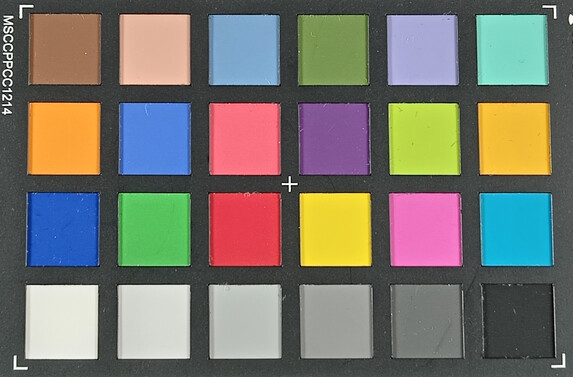
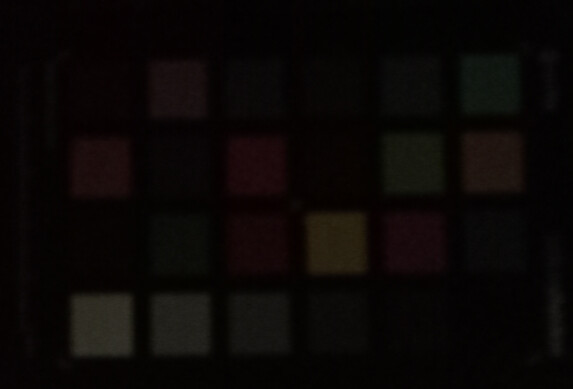
Display - Honor-cell phone without PWM
The screen of the Honor X7a has a rather low resolution of 1600 x 720 pixels even for this price range. At least the IPS screen is fairly bright with 562 cd/m² on average and also has a good black value, so the contrast is quite high and colors look a bit more vivid.
However, color deviations are clearly visible, for example in the form of a blue cast in the grayscale, although we have already selected the "Warm" color scheme. Especially bright grayscales and light blue and green tones deviate too much from the optimum.
We did not notice PWM flickering even at minimum brightness.
| |||||||||||||||||||||||||
Brightness Distribution: 91 %
Center on Battery: 586 cd/m²
Contrast: 2254:1 (Black: 0.26 cd/m²)
ΔE ColorChecker Calman: 4.24 | ∀{0.5-29.43 Ø4.77}
ΔE Greyscale Calman: 5.3 | ∀{0.09-98 Ø5}
93.7% sRGB (Calman 2D)
Gamma: 2.226
CCT: 6955 K
| Honor X7a IPS, 1600x720, 6.7" | Honor X8a IPS, 2388x1080, 6.7" | Xiaomi Redmi Note 12 4G AMOLED, 2400x1080, 6.7" | Nokia G22 IPS, 1600x720, 6.5" | Samsung Galaxy A14 5G PLS LCD, 2408x1080, 6.6" | |
|---|---|---|---|---|---|
| Response Times | 13% | 91% | -76% | -32% | |
| Response Time Grey 50% / Grey 80% * (ms) | 33.8 ? | 29 ? 14% | 2.8 ? 92% | 60.2 ? -78% | 46.48 ? -38% |
| Response Time Black / White * (ms) | 16 ? | 14 ? 12% | 1.7 ? 89% | 27.7 ? -73% | 20.21 ? -26% |
| PWM Frequency (Hz) | 484 | ||||
| Screen | 10% | 39% | -7% | -47% | |
| Brightness middle (cd/m²) | 586 | 492 -16% | 650 11% | 674 15% | 579 -1% |
| Brightness (cd/m²) | 562 | 481 -14% | 658 17% | 641 14% | 543 -3% |
| Brightness Distribution (%) | 91 | 94 3% | 97 7% | 90 -1% | 87 -4% |
| Black Level * (cd/m²) | 0.26 | 0.38 -46% | 0.43 -65% | 0.57 -119% | |
| Contrast (:1) | 2254 | 1295 -43% | 1567 -30% | 1016 -55% | |
| Colorchecker dE 2000 * | 4.24 | 1.32 69% | 1.55 63% | 4.45 -5% | 7.6 -79% |
| Colorchecker dE 2000 max. * | 8.44 | 3.37 60% | 2.59 69% | 7.41 12% | 12.7 -50% |
| Greyscale dE 2000 * | 5.3 | 1.9 64% | 1.8 66% | 5.1 4% | 8.7 -64% |
| Gamma | 2.226 99% | 2.194 100% | 2.194 100% | 2.072 106% | 2.23 99% |
| CCT | 6955 93% | 6288 103% | 6316 103% | 7799 83% | 9344 70% |
| Total Average (Program / Settings) | 12% /
10% | 65% /
52% | -42% /
-21% | -40% /
-44% |
* ... smaller is better
Display Response Times
| ↔ Response Time Black to White | ||
|---|---|---|
| 16 ms ... rise ↗ and fall ↘ combined | ↗ 11.2 ms rise | |
| ↘ 4.8 ms fall | ||
| The screen shows good response rates in our tests, but may be too slow for competitive gamers. In comparison, all tested devices range from 0.1 (minimum) to 240 (maximum) ms. » 36 % of all devices are better. This means that the measured response time is better than the average of all tested devices (20.2 ms). | ||
| ↔ Response Time 50% Grey to 80% Grey | ||
| 33.8 ms ... rise ↗ and fall ↘ combined | ↗ 22.4 ms rise | |
| ↘ 11.4 ms fall | ||
| The screen shows slow response rates in our tests and will be unsatisfactory for gamers. In comparison, all tested devices range from 0.165 (minimum) to 636 (maximum) ms. » 45 % of all devices are better. This means that the measured response time is similar to the average of all tested devices (31.6 ms). | ||
Screen Flickering / PWM (Pulse-Width Modulation)
| Screen flickering / PWM not detected | |||
In comparison: 53 % of all tested devices do not use PWM to dim the display. If PWM was detected, an average of 8081 (minimum: 5 - maximum: 343500) Hz was measured. | |||
Performance, emissions and battery life - clear weaknesses
With the Helio G37 Honor has opted for a very weak SoC, even for this price range. Thus, the review sample only achieves 1/5 of the points in the benchmarks that the similarly priced Samsung Galaxy A14 5G with MediaTek Dimensity 700 achieves. In everyday use, you have to live with stutters and waiting times from time to time, for example when changing settings or opening apps.
In terms of storage, the Honor X7a is well equipped, but also slow since the phone only has eMMC flash. It only achieves about 1/3 of the transfer rates of UFS flash. On the Internet, too, you sometimes have to wait quite a long time until pages are loaded and photos appear.
Despite the comparatively low performance, the system heats up to 44.3 °C (~112 °F). That is clearly noticeable, but not yet critical, especially since the room temperature was a bit higher. However, this does not reduce the performance any further, as the stress test shows us: Even after numerous runs of a benchmark, the frame rates are constant. Unfortunately, the Honor X7a could not use 3DMark Wild Life, so we used the GFXBench T-Rex for the stress tests.
The mono speaker of the Honor phone is located at the bottom edge and does a poor job: Songs sound quite dull, even at maximum volume and at high frequencies there is usually only a little mush of sound. Audio devices connected via 3.5 mm jack or Bluetooth sound better.
The battery is ample with 5,330 mAh and manages a good runtime of 16:54 hours in our WLAN test. This should allow the user to work for two days without having to recharge the phone. If it is necessary, it can be recharged in less than 2 hours even when the phone is empty thanks to the 22.5-watt charger included.
| Honor X7a | Honor X8a | Xiaomi Redmi Note 12 4G | Nokia G22 | Samsung Galaxy A14 5G | Average 128 GB eMMC Flash | Average of class Smartphone | |
|---|---|---|---|---|---|---|---|
| AndroBench 3-5 | 8% | 569% | 368% | 458% | 84% | 1018% | |
| Sequential Read 256KB (MB/s) | 280 | 278.1 -1% | 954.87 241% | 881 215% | 849.3 203% | 300 ? 7% | 2235 ? 698% |
| Sequential Write 256KB (MB/s) | 223 | 224.2 1% | 709.51 218% | 367 65% | 469.83 111% | 195.1 ? -13% | 1871 ? 739% |
| Random Read 4KB (MB/s) | 59.1 | 61.6 4% | 261.09 342% | 131 122% | 193.63 228% | 85.9 ? 45% | 297 ? 403% |
| Random Write 4KB (MB/s) | 14.7 | 18.7 27% | 231.57 1475% | 172 1070% | 204 1288% | 58.1 ? 295% | 343 ? 2233% |
Temperature
(±) The maximum temperature on the upper side is 44.4 °C / 112 F, compared to the average of 35.2 °C / 95 F, ranging from 21.9 to 247 °C for the class Smartphone.
(±) The bottom heats up to a maximum of 42.4 °C / 108 F, compared to the average of 34 °C / 93 F
(+) In idle usage, the average temperature for the upper side is 28.7 °C / 84 F, compared to the device average of 32.9 °C / 91 F.
Speaker
Honor X7a audio analysis
(±) | speaker loudness is average but good (79.6 dB)
Bass 100 - 315 Hz
(-) | nearly no bass - on average 30.1% lower than median
(±) | linearity of bass is average (8.1% delta to prev. frequency)
Mids 400 - 2000 Hz
(±) | higher mids - on average 6.8% higher than median
(±) | linearity of mids is average (8.9% delta to prev. frequency)
Highs 2 - 16 kHz
(+) | balanced highs - only 4.2% away from median
(+) | highs are linear (5.5% delta to prev. frequency)
Overall 100 - 16.000 Hz
(±) | linearity of overall sound is average (28% difference to median)
Compared to same class
» 73% of all tested devices in this class were better, 5% similar, 23% worse
» The best had a delta of 11%, average was 35%, worst was 134%
Compared to all devices tested
» 85% of all tested devices were better, 3% similar, 13% worse
» The best had a delta of 4%, average was 24%, worst was 134%
Samsung Galaxy A14 5G audio analysis
(+) | speakers can play relatively loud (90.4 dB)
Bass 100 - 315 Hz
(-) | nearly no bass - on average 33.8% lower than median
(+) | bass is linear (4% delta to prev. frequency)
Mids 400 - 2000 Hz
(±) | reduced mids - on average 6.1% lower than median
(+) | mids are linear (5.5% delta to prev. frequency)
Highs 2 - 16 kHz
(+) | balanced highs - only 4.1% away from median
(+) | highs are linear (2% delta to prev. frequency)
Overall 100 - 16.000 Hz
(±) | linearity of overall sound is average (19.9% difference to median)
Compared to same class
» 32% of all tested devices in this class were better, 7% similar, 61% worse
» The best had a delta of 11%, average was 35%, worst was 134%
Compared to all devices tested
» 50% of all tested devices were better, 7% similar, 42% worse
» The best had a delta of 4%, average was 24%, worst was 134%
Battery life
| Battery Runtime - WiFi Websurfing | |
| Average of class Smartphone (12.1 - 54.1, n=208, last 2 years) | |
| Nokia G22 | |
| Samsung Galaxy A14 5G | |
| Honor X7a | |
| Honor X8a | |
| Xiaomi Redmi Note 12 4G | |
Pros
Cons
Verdict - If only it had more power...
The Honor X7a could have been an interesting, affordable mid-range phone if the manufacturer had used a more powerful processor. Thus, you have to accept significant restrictions in performance and the additional wide-angle camera and the good camera algorithm can hardly compensate for that.
The phone lasts for a long time and charges quite quickly, but the lame storage and the poor speaker are further weak points. Honor could have also set itself apart from the competition with a 5G modem, but instead you get a scarce selection of 4G frequencies, so you can hardly use your phone on further trips.
The Honor X7a looks good, has up-to-date security patches and a PWM-free screen, but is at best suitable for photo fans with a tight budget and little demand for performance.
5G is available at a comparable price, for example, in the Samsung Galaxy A14 5G. The Redmi Note 12 4G even comes with an AMOLED screen. Both offer significantly more performance than our test device.
Price and availability
Directly from the manufacturer you can buy the Honor X7a for 179 Euros (~$195) at the time of testing. If you want the phone in silver-gray, this is currently the cheapest option, especially since it is hardly available elsewhere.
Those interested can save another 10 Euros (~$11) on the black and blue color variants at Internet retailers, for example at amazon.de.
Honor X7a
- 07/01/2023 v7 (old)
Florian Schmitt
Transparency
The selection of devices to be reviewed is made by our editorial team. The test sample was provided to the author as a loan by the manufacturer or retailer for the purpose of this review. The lender had no influence on this review, nor did the manufacturer receive a copy of this review before publication. There was no obligation to publish this review. As an independent media company, Notebookcheck is not subjected to the authority of manufacturers, retailers or publishers.
This is how Notebookcheck is testing
Every year, Notebookcheck independently reviews hundreds of laptops and smartphones using standardized procedures to ensure that all results are comparable. We have continuously developed our test methods for around 20 years and set industry standards in the process. In our test labs, high-quality measuring equipment is utilized by experienced technicians and editors. These tests involve a multi-stage validation process. Our complex rating system is based on hundreds of well-founded measurements and benchmarks, which maintains objectivity. Further information on our test methods can be found here.


